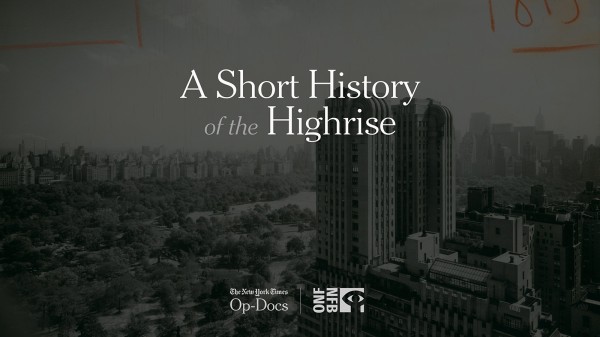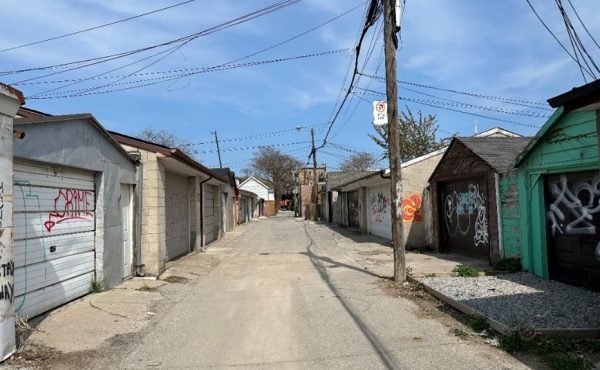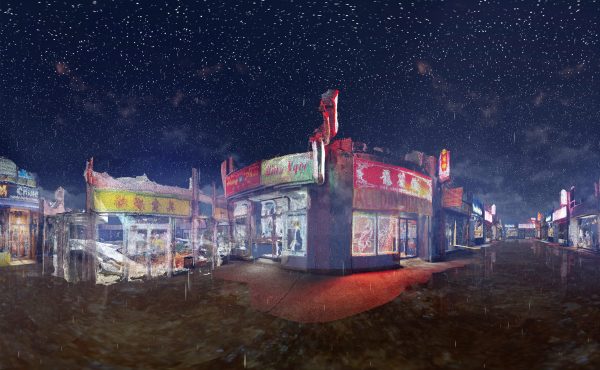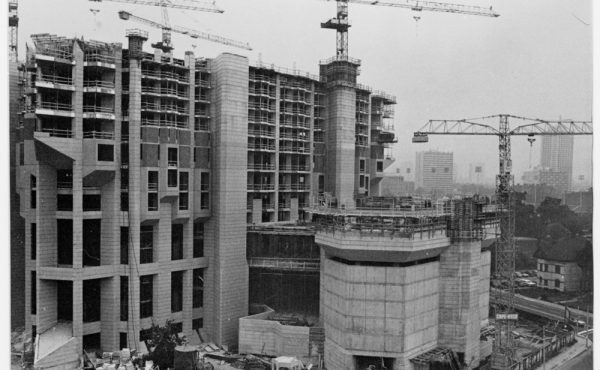Editor’s Note: We invited Katerina Cizek, creator and filmmaker of HIGHRISE, to discuss the launch of her newest project with the New York Times. HIGHRISE’s inspiration started in Toronto’s suburbs has become a world-wide collaborative project. Spacing editor Shawn Micallef wrote an op-ed on highrise living in Toronto in the Oct 6 Sunday Review section of the Times to go along with their series.
Cities, throughout history, are defined by their spectacular temples, banks, castles and cultural monuments.
But a city’s everyday urban fabric ‑ ordinary residential highrise buildings ‑ can tell us more than any other built form about a civilization’s respect for humanity.
That’s why I’ve spent the last five years documenting them and the lives inside them, as the director of the National Film Board of Canada’s Emmy-winning project called HIGHRISE.
About a year ago, the project took an unexpected turn. The New York Times Op-Docs video department called on us to collaborate on a new iteration of HIGHRISE. They gave me rare access to their remarkable repository of undigitized photographs, an archive affectionately known as the Morgue. I sifted through thousands of photos in their “housing files” to draw out the history of the common residential HIGHRISE building. The resulting interactive documentary, called The Short History of the Highrise, launches this week.
The centrepiece of the project is a series of four short films. The first three (“Mud,” “Concrete” and “Glass”) draw on The New York Times’s extraordinary visual archives. Each film is intended to evoke a chapter in a storybook, with rhyming narration and photographs brought to life with intricate animation. The fourth chapter (“Home”) is comprised of images submitted by the public. The interactive experience incorporates the films and, like a visual accordion, allows viewers to dig deeper into the project’s themes with additional archival materials, text and microgames. On tablets, viewers can navigate the story extras and special features within the films using touch commands like swipe, pinch, pull and tap. On desktop and laptop computers, users can mouse over features and click to navigate. Smartphone users can view the four films via the New York Times Mobile Web site.
The modern high-rise was invented in New York City in the late 1800s, as a luxury for the rich. Since then, the high-rise (which architects typically define as 12 or more stories high) has become the most commonly built form of the last century, a tool to battle sprawl and intensify urban density. But the history of vertical living goes far back in time and around the globe — from the biblical Tower of Babel, to Arizona cliff dwellings made of mud, to the Soviet Krushchevka Towers. Today, residential high-rise buildings have become symbols of gargantuan excess and of segregation. They are even heroic, if often flawed, experiments in a civilization’s utopic quest to secure equitable housing. New York City has played a crucial role in the evolution of this global phenomenon. And as the world’s cities grow, the residential high-rise is a social and political barometer of urbanization’s successes and failures.
When things go wrong, the instinct to blame the buildings and tear them down has had an equally radical impact on the city and its citizens. As an alternative to demolition, I’ve been inspired by examples of tower renewal — efforts to honour the legacy of the post-war concrete buildings and to turn high-rise neighborhoods into sustainable, affordable and decent places to live. Meanwhile, we might also apply lessons from the past century to the current unmitigated and highly privatized glass condominium craze. We need wisdom and vision to return to urban planning, and urban citizenship.
For me as a documentarian, the high-rise building has become an unexpected storytelling prism to tell an epic story about humanity. As I poured over thousands of images in the Morgue, I faced the daunting task of telling 2,500 years of history in a short film genre.
I was inspired by the way pop-up storybooks have been reinvented for digital tablets like the iPad. Rhyming text could deliver efficiency, but would also poeticize and thereby ennoble an ignored history of how people really lived — and live. The animation and interactivity could playfully revisit a stunning photographic collection and reinterpret great feats of engineering.
I’ve always loved archival films built of photographs, but I’ve found myself wanting to touch the photographs themselves, to see for myself from where they have come. We’ve built this accordion-like interactive film experience,to allow you to go deeper into the film and its photographic and conceptual parts, without ever loosing the thread of the main cinematic narrative.
Ultimately, this story is less about buildings than it is about people. It is about the places we call home, and how we decide who gets to live where. If you look closely, seemingly ordinary buildings — and old photographs — can reveal the values of the society that has created them.





One comment
I thought high-rises were invented in Chicago?